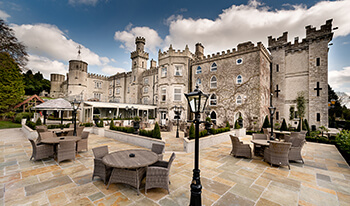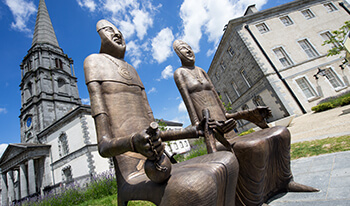Experience 800 years of history in Limerick City. King John’s Castle is situated in the heart of Limerick’s Medieval Heritage Precinct, on the River Shannon at “Kings Island”. The Castle was built between 1200 and 1210. It was repaired and extended many times over the following centuries. King John’s Castle remains a most impressive Anglo-Norman fortification. It retains many of the pioneering features which made its construction unique for its day. Its massive gatehouse, battlements and corner towers await exploration!
Features include: 13th Century Anglo-Norman Castle with panoramic views of Limerick City, the River Shannon and surrounding countryside. The visitor centre contains an imaginative historical exhibition, which recounts the history of the castle in dramatic fashion. Archeological excavations situated beneath the interpretative building include the earliest evidence of settled life in Limerick and evidence of siege mines. The courtyard displays some of the trades and traditions of the 16th century.
Visitors can also see the 13th century undercroft of theofficers’ quarters which were excavated in 1993-1995. King John, as “Lord of Ireland”, minted his own coins and the Royal moneyer would have struck the coins in the Castle Mint. Exciting archeological excavations: The visitor enters another world when exploring the exciting archeological excavations at King John’s Castle. These excavations have revealed pre-Norman houses which predate the castle. There is also evidence of the traumatic Castle siege of 1642. Mines, and countermines used to destroy them, were exposed. In one clay tunnel, a period pistol was found. A reconstruction of one of the siege mines, also in situ, is an added attraction, enabling the visitor to experience something of the fearful atmosphere of those times.
A life size statue of the Limerick poet Michael Hogan (1826 - 1899), Bard of Thomond is outside King Johns Castle. Limerick sculptor Jim Connolly has produced a six an a half foot bronze statue which stands on a plinth which is a replica of the plinth under the Treaty Stone. The Bard is best remembered for his epic poem, Drunken Thady and the Bishops Lady.
Tours featuring this attraction
Peace of Mind Guarantee
Your trip, worry free!Our Ireland based team is on call throughout your vacation!






